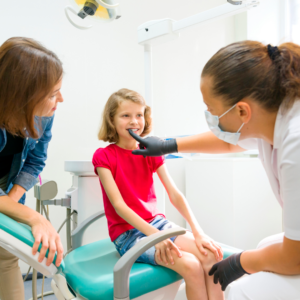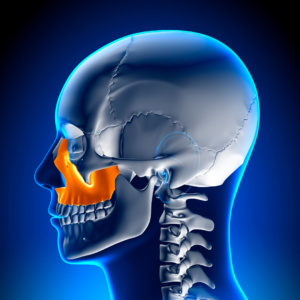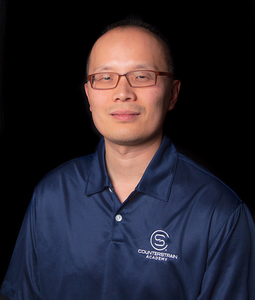GROWTH APPLIANCE THERAPY
At Natural Dentist Associates we offer several expansion appliances, based on individual patient needs. An expansion appliance can help treat teeth, jaws, temporomandibular joints (TMJ), face, and airways for growth and development, without any surgery.
This fascinating appliance therapy process can treat a variety of dental and medical conditions, including:
- Sleep Apnea/Obstructive Sleep Apnea
- Snoring
- TMJ Disorders
- Teeth Crowding
- Airway Disorders
- Sinus Problems
- High, Narrow Palate
- Underdeveloped Facial/Jaw Structure
- Bad Bite
- Mouth Breathing
- Attention Deficit Disorder
- Headaches
- Shoulder/Neck Pain
- Poor Posture
- Overbite/Underbite/Crossbite
- Mid-Face Deficiency/Long Face Syndrome
- Narrow Face
- Recessed Chin
- Misalignment
If you or your child are suffering from one or more of these conditions, there is a good chance of underdevelopment in facial, jaw, and airway structures. A quick consultation with one of our trained professionals can easily diagnose a developmental issue and get you the proper appliance and course of therapy to restore proper growth and function.

EARLY FACIAL/JAW DEVELOPMENT

Although it is widely believed that facial profile and beauty are directly related to genetics, this is only partially true. The development of a child’s facial, jaw, and airway structure begins very early on, and is largely based on the environment in which growth is taking place. Facial growth includes the individual growth of each bone that makes up the face. Healthy facial development is the product of normally functioning muscles, proper nutrition, and fully developed airways and nasal passages. When one of these factors is compromised, it will often have an impact on the others. For example, a child with an underdeveloped airway may have difficulty breathing through their nose. This may cause the child to breathe through their mouth, setting off a chain of reactions that can have a huge impact on facial development and overall health.
When discussing facial growth, it is important to understand the connections between facial bones and structure. The upper jaw (maxilla) is not just a bone that holds teeth, it is the entire central portion of one’s face. The maxilla defines the nasal cavity, airways, cheekbones, and determines the position of the lower jaw (mandible). Because of these connections, a fully developed maxilla is critical to one’s health as well as facial features.
TONGUE POSITIONING
The tongue is one of the strongest muscles in the human body, and helps to shape the palate and jaws during early development by applying constant force/pressure to the surrounding structures. Because the jaw bones make up quite a large portion of the face, underdevelopment in this area can cause unpleasant physical features.
The proper oral resting position when not eating or talking should be:
- Tongue to the roof of the mouth
- Lips sealed with teeth lightly touching
- Nasal breathing
Improper tongue resting position often results in underdevelopment of the upper arch/palate. When there is not adequate space in the upper palate, teeth can become crowded and/or crooked, and the lower jaw often becomes forced downward.

FACIAL MUSCLE DYSFUNCTIONS/ PARAFUNCTIONAL HABITS

Jaw and facial growth are guided and stimulated by the soft tissue and muscles of the face. When a muscle or soft tissue dysfunction is present, growth is altered. A facial muscle dysfunction may also be referred to as a parafunctional habit. A parafunctional habit is the repeated use of oral structures that does not involve eating, drinking, swallowing, speaking, or breathing. Because the facial muscles are necessary for development purposes, repeated abnormal function of these muscles can have a negative impact on growth.
Here are a few common parafunctional habits:
- Improper Swallowing
- Thumb Sucking
- Prolonged Use of a Pacifier
- Overactive Lip Muscles
- Overactive Cheek Muscles
- Mouth Breathing
- Incorrect Tongue Posture
- Open Mouth Resting Posture
- Teeth Grinding/Bruxism
- Tongue Thrusting
Proper oral resting posture, exclusive nasal breathing, and eliminating damaging parafunctional habits are all critical to proper facial growth, airway development, and overall health.
APPLIANCE THERAPY PROCESS
Consultation– the first step is scheduling a consultation, at which point the doctor will learn about your current and past medical and dental history, perform a physical exam including any diagnostic testing, scans or xrays, and create a plan of treatment. You will be provided all treatment options available to you, and a treatment coordinator will discuss the associated costs.
Cone Beam CT Scan– Your doctor may recommend a CBCT scan to help with diagnosis. The CBCT scan is the most advanced technique we have for obtaining detailed images of bone structures for use in diagnosing conditions like TMJ and airway issue. Cone beam imaging is a form of computer tomography (CT) that uses multiple xrays to create a 3-D image of your tissues, including bone tissue. Each x-ray takes a flat picture of your bones. When these images are stacked, they create a 3-D model. Cone beam imaging is different from traditional CT scans because it takes scans from a single point, but projected at different angles. This creates views giving us better representations of 3-D structures, allowing more precise imaging. As an added bonus, the cone beam is able to create images with much less radiation than a traditional CT scan.
At-Home Sleep Testing– If you doctor suspects a breathing problem, she may recommend a take-home sleep test. An at-home sleep test is an easy, cost-effective way to figure out whether you are having trouble breathing. This test monitors your breathing, oxygen levels, and breathing effort while worn. It will measure pauses or absence of breathing, and whether our breathing is shallow. The great news is, you can usually take home the sleep test on the day of your appointment, and these results will greatly help in diagnosis of a sleep disorder.
Dental Appliance Impressions– Once you have a firm diagnosis and treatment recommendation, you are ready to take the impressions for your new growth appliance. The impressions and photos will be taken in one quick and painless appointment. The impressions will be sent to a highly skilled lab where the technicians will fabricate your dental appliance. Once the appliance is created, it will be shipped to our office.
Appliance Delivery– We will call you when the appliance arrives in our office to schedule your appliance delivery appointment. At this appointment, the doctor will assure the proper fit of the appliance and make any necessary adjustments. We will teach you how to properly care for your new dental appliance, and schedule your first appliance adjustment appointment.
Appliance Adjustment– Periodically during your expansion appliance therapy, you will need to visit the office for short adjustment appointments. During these appointments, we will record treatment progress and adjust the appliance to continue expansion. Depending on your treatment plan, you may see the physical therapist and/or orofacial myologist during these appointments.
Physical Therapy– Depending on your symptoms/condition prior to the start of expansion appliance therapy, you may benefit from periodic physical therapy sessions over the course of treatment. Facial underdevelopment does not stop at the teeth and jaws. Development issues can have an effect on posture, muscles, alignment, and functions. Treating these areas together helps the body to work in perfect harmony, which is why we have added a well-trained physical therapist to our expansion appliance therapy process.
Orofacial Myologist– In addition to physical therapy, we have added an orofacial myologist to our treatment team. As you now know, parafunctional habits can be detrimental to proper growth and function. Which is why it is so important to retrain the muscles of the face and mouth to work correctly and efficiently. In patients where parafunctional habits are present, short sessions with the myologist will compliment the expansion therapy process, where patients will practice and learn simple exercise that will restore proper function of muscles/habits.
By incorporating a co-treatment approach to growth appliance therapy, we can achieve the growth and development we desire, eliminate the dysfunctions causing developmental issues, and relearn proper function of the mouth, teeth, jaws, and airways.
There are hundreds of dental appliances on the market today. However. Most of these appliances do little to nothing about treating the underlying cause. Traditional dentists often recommend sleep appliances that open the airway during sleep to reduce snoring. While this may help the snoring during use, it does nothing to resolve the cause of the snoring. Growth appliance therapy with an experienced dentist does not just open the airway while wearing the appliance, it expands the airway structure, creating a permanent solution.
Schedule a consultation with Natural Dentist Associates to learn more about Expansion/Growth Appliance Therapy.


